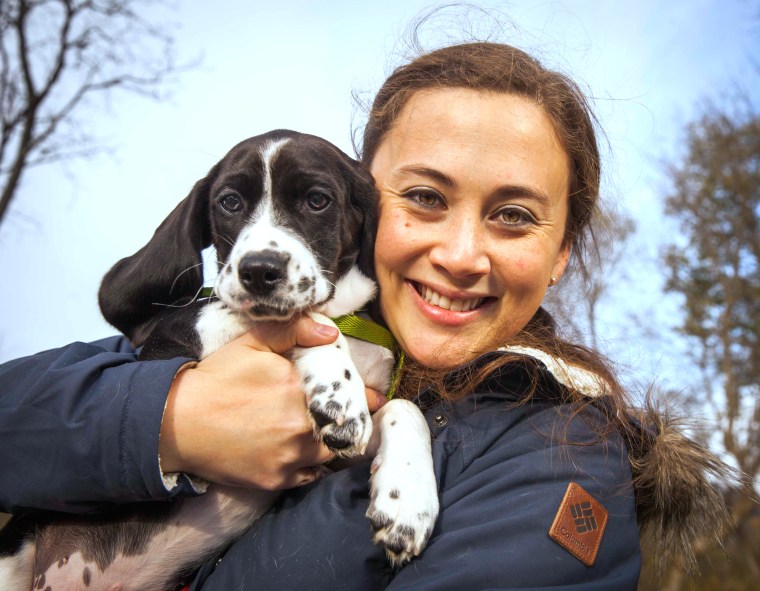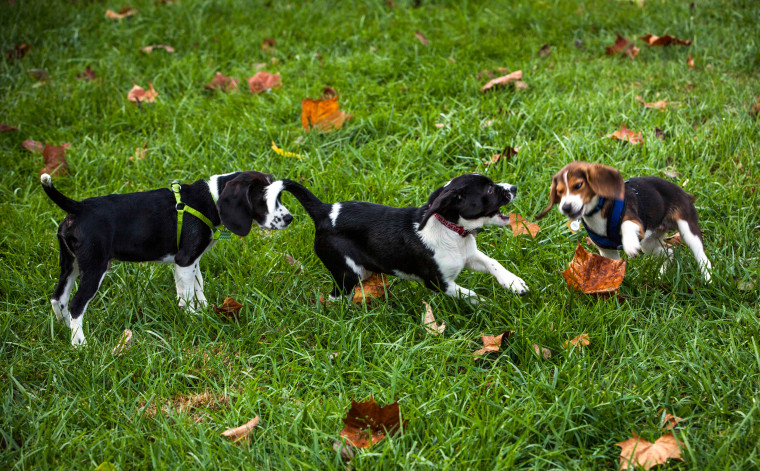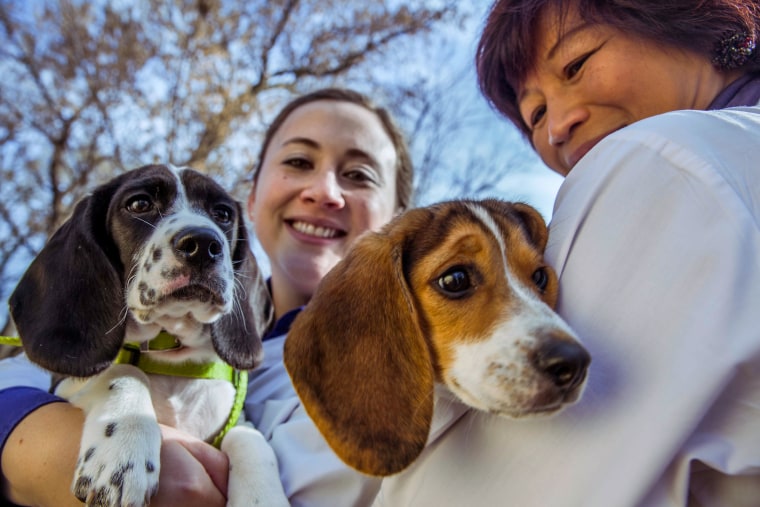The world’s first puppies have been conceived using IVF — the same test-tube method that leads to the births of tens of thousands of human babies every year.
The idea isn't to get more puppies. It's to be able to genetically manipulate puppies, removing disease-causing genes, for instance, and perhaps to someday help save endangered canine species, the team at Cornell University's College of Veterinary Medicine said.
And they’re ... just plain cute.

Why has it taken so long? It’s because dogs are unique when it comes to making puppies.
“Dog reproduction is very, very different from that of other mammals,” said Alexander Travis, an associate professor of reproductive biology who helped lead the work.
It’s taken decades of work to figure out how to make a puppy in a test tube.

The world’s first human test-tube baby, Louise Brown, was born in 1978. Since then millions of children have been born after scientists united egg and sperm in lab dishes and implanted them into the wombs of women.
In-vitro fertilization or IVF has been used to breed cattle, monkeys, and even cats. But not dogs.
It’s because their reproductive cycle is a little bit different. They only go into heat – produce eggs — twice a year, for one thing.
"When they ovulate an egg, it gets released at a very immature stage compared to other species," Travis added.
"So for example in human or mouse, when the egg is ovulated, it's pretty much ready to be fertilized. In the dog, it has to mature in the oviduct or Fallopian tube for several days."
And the eggs cells are dark and hard to see.
The Cornell team came up with a way to make it work using a bath that includes the chemical magnesium, and finding the right stage of egg cell to use, they report in the Public Library of Science journal PLoS ONE.
The result? Seven puppies.
Travis says the method can be used to breed endangered species.

“There's currently five species of dog that are threatened with extinction,” he said. They include the red wolf, the African painted dog, and the Ethiopian wolf.
“So by doing this now in a domestic dog, what we're doing is creating a platform or starting place to now expand this technique to be used for all these other species of dog. It may not turn out to be exactly the same, but it gives us a really good starting point," Travis told NBC News.
Researchers also can use the method to correct genetic diseases that plague many breeds of dog.
“In-vitro fertilzation itself can't help prevent disease but what it does is it gives us a way to generate embryos and then we can use new technologies - gene editing technologies - to hopefully go in and fix uh certain genes that cause those diseases,” Travis said.
“Dalmations are known for getting urinary stones; golden retrievers are susceptible to different types of cancer. Collies get certain eye defects.”
And dogs are very prone to cancer. They’re often used in labs to study human diseases.
“There are many, many diseases — over 350 diseases — that dogs have that are genetic in origin that are shared with people,” Travis said.
What about the puppies?
“What's next for the puppies is a lot of house training,” Travis said.

